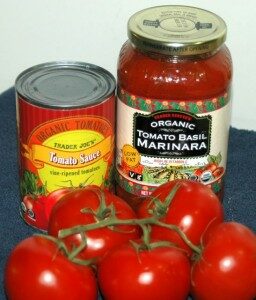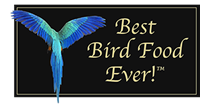This blog post contains excerpts from my column, ‘The Holistic Parrot’, that appears in the June 2011, #161 issue of Parrots magazine.
Wild Birds Know, Leave Nightshade Family Alone
Daily I can have up to 100 wild birds patiently waiting for their sprouts to be sprinkled at their designated feeding area. These wild ones eagerly swoop down and within minutes the meager scattering of sprout remnants has been devoured. However, I’ve noticed these same birds leave the fruits on my annual tomato plants completely alone. Now since the wild birds leave tomatoes alone, perhaps with their ability to self medicate and self nourish (see ‘The Holistic Parrot’ in issues # 134 and # 135 of Parrots magazine) they naturally recognize that members of the nightshade family should best be left alone.
x

Are tomatoes safe for parrots to eat? There are several areas to consider regarding this. One concern I’ve read about is that tomatoes are too acidic for parrots. However, I wonder more about feeding parrots a food from the nightshade family. Let’s give you some of the highlights of what my research uncovered.
x
Tomatoes, and the Nightshade Family
The nightshade, or potato, family of flowering plants contains approximately 2,500 species. Many of these plants are economically important. Some are common food items while others are used in making pharmaceutical drugs. Among the most well known are the tomato (Lycopersicon esculentum), potato (Solanum tuberosum), eggplant (S. melongena), garden (or capsicum) pepper (Capsicum annuum and C. frutescens), tobacco (Nicotiana tabacum), deadly nightshade – the source of belladonna (Atropa belladonna), the poisonous jimsonweed (Datura stramonium) and poisonous nightshades (S. nigrum, and S. dulcamara). Many garden ornamentals are also in this family.
x
Chemical Components
Plants in the nightshade family are known for containing a diverse range of alkaloids. The value these alkaloids have in making pharmaceutical drugs is also a key reason that they cause adverse reactions in the individuals who consume them.
Of particular interest are the glycoalkaloids and steroidal alkaloids. According to the “Handbook of Food Toxicology” (SS Deshpande) and an article in the “Journal of Neurological and Orthopedic Medical Surgery” (NF Childers, PhD and MS Margoles, MD), these compounds have been identified in adversely effecting the function of nerves and muscles, the digestive system and have been seen to compromise joint function. Many of these alkaloids can result in muscle twitching, trembling, paralyzed breathing, or convulsions. The nightshades have also been seen to cause the destruction of red blood cells in vitro (in laboratory apparatus).
x
Vitamin D3 Hypervitaminosis
Many members of the nightshade family contain the very active metabolite of vitamin D3 (1a25 dihydroxycholecalciferol).(4) As we learned in this column (‘The Holistic Parrot’ in Parrots magazine, issue # 159) when excess amounts of this vitamin are consumed the tissues absorb too much calcium. This results in calcinosis (abnormal deposits of calcium) in soft tissues, ligaments, and tendons, with mineralization in walls of major arteries and veins, and osteopetrosis (an increase in bone density) and related pathologies.
So the jury is in! And it seems none of us, especially our parrots, should be eating foods from the nightshade family – raw or cooked.
Tomatoes Contain Lycopene, Lutein and Zeaxanthin
Over the years, since I first wrote this blog post in 2011, some people have commented that tomatoes contain high levels of the antioxidants lycopene, lutein and zeaxanthin. There are other foods, that are healthier for your parrots to eat that contain these three antioxidants. And if you’re interested in feeding antioxidant rich foods for your bird’s improved health, you may want to learn more about our sprouting blends: Best Bird Food Ever! If so, please read: ‘Why Our Sprouting Blends are the Best for Your Birds’.
****************
For all the details about feeding tomatoes to your birds see the complete published version of ‘The Holistic Parrot’ column that appeared in the June 2011, # 161 issue of Parrots magazine.
Read an account of the report by an avian veterinarian who determined that tomatoes had caused stomach ulcers in a cockatoo.
Was it the tomatoes’ acidity that caused the ulcers? Or was it something else?
Find out about the chemical components in tomatoes that can harm the digestive tract and other areas of the body?
Does cooking diminish the harmful effects of foods in the nightshade family, or is this just wishful thinking?
Learn these facts and more, in the June 2011, # 161 issue of Parrots magazine.
Subscriptions to Parrots magazine and single issues are available on-line.
To purchase your copy of the June 2011 issue of Parrots magazine visit www.parrotmag.com .
x
Was this blog helpful? Do you have any other questions about this topic? We welcome your comments.







2 Comments